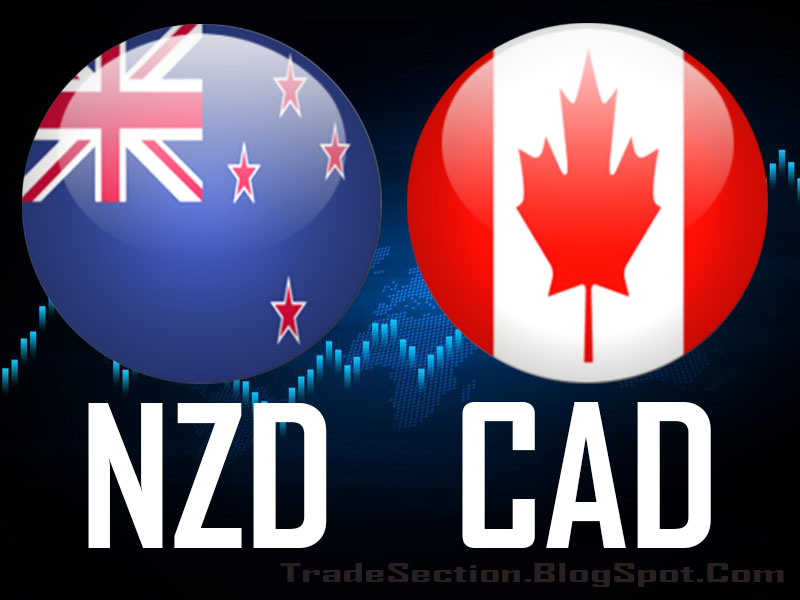📊 Market Overview: NZDCAD Forms Strong Bullish Setup
Fundamental Outlook for NZDCAD
Recent developments in the global economic landscape have introduced new dynamics to the NZDCAD pair, with implications that may drive short-term volatility. The Reserve Bank of New Zealand (RBNZ) and the Bank of Canada (BoC) have been closely monitored for their policy decisions, and both institutions have signaled a shift in monetary stance. The RBNZ recently hinted at maintaining a cautious approach to rate hikes, citing moderation in inflation pressures and a resilient labor market, while the BoC has shown signs of tightening policy to combat persistent inflation. This divergence in central bank messaging creates a tug-of-war on interest rates, with the potential to influence the NZD’s appeal relative to the CAD. The NZDCAD pair is also being affected by broader trade tensions, as New Zealand’s export-dependent economy faces uncertainty in key markets like China and Australia. Meanwhile, Canada’s reliance on commodity prices, particularly oil and natural gas, has seen mixed signals, with recent geopolitical instability in the Middle East and North America affecting energy markets. These factors may pressure the CAD downward, while the NZD could find support from steady agricultural exports and a stable political environment. For traders eyeing the NZDCAD Trade Signal, the interplay between these fundamental forces could create opportunities for directional trades, particularly if the RBNZ’s dovish tone contrasts with the BoC’s hawkish stance.
From a technical perspective, the NZDCAD pair is currently testing key levels around the entry point of 0.80964, which aligns with the recent consolidation phase observed in the medium-term trend. The trade signal’s take-profit level at 0.81470 suggests a potential upward breakout, while the stop-loss at 0.80560 highlights the importance of risk management in this volatile environment. The pair appears to be forming a bullish pattern near the resistance zone, with a strong upward momentum indicated by the MACD crossover and positive RSI divergence. However, the immediate downside support at 0.80560 remains critical, as any breach could trigger a retest of the recent low. In the context of NZDCAD Fundamental Analysis, the current pricing reflects expectations of divergent monetary policies, with investors weighing the potential for a rate cut in New Zealand against ongoing tightening in Canada. The NZDCAD Technical Analysis underscores the importance of monitoring Fibonacci retracement levels, particularly the 61.8% level at 0.80964, which may act as a pivotal point for trend continuation or reversal. As the NZDCAD Live Trade approaches this critical juncture, traders should stay vigilant for signs of a breakout or a breakdown, given the interplay between fundamental uncertainties and technical patterns.
Looking ahead, the NZDCAD Trading Forecast suggests a cautious outlook, with the pair potentially oscillating between its support and resistance levels in the coming days. The RBNZ’s upcoming policy meeting and the BoC’s inflation data release will likely serve as key catalysts, with market participants closely analyzing the language of officials for clues about future rate movements. If the BoC confirms its commitment to rate hikes, the CAD may strengthen, but if the RBNZ signals a pause, the NZD could gain traction. Traders should also consider the impact of global risk-on/risk-off sentiment, as geopolitical developments or shifts in investor appetite for higher-yielding assets may tilt the market. The NZDCAD Trade Signal remains relevant in this scenario, with the current configuration favoring a short-term bullish play if central bank actions align with the recent technical setup. However, the fast-moving nature of forex markets means that sudden news flows—such as changes in trade agreements, commodity price shocks, or inflation data surprises—could quickly alter the trajectory. For a deeper dive into potential macroeconomic influences, fxstreet.com/analysis offers real-time insights into how global events are shaping currency pair dynamics.
Price Action & Indicator Insight for NZDCAD
ATR(14) is currently consolidating, which suggests that a breakout move may be forming. Combined with RSI extremes and SMA positioning, this aligns perfectly with our RSI-based trading strategy.
Technical confirmation also comes from trendline breaks and RSI crossing key levels. This adds weight to the buy bias and supports the trade idea under our proven market trading methodology.
In summary, this buy trade in NZDCAD is backed by multiple technical confirmations. From RSI extremes to SMA100 crossovers and ATR compression, the setup aligns with our best-performing Signal framework.
✅NZDCAD Strategy Overview – Buy Signal Details for Traders
- Pair: NZDCAD
- Sentiments: Bullish
- Entry Level: 0.80964 or Better
- Take Profit: 0.81470
- Protection: 0.80560
- Risk Analysis:0.5% of equity or adjust accordingly
- Arrival Time: 2025.09.22 12:51
📊 NZDCAD Trade Signal – Entry Checklist
- Use a stop-limit order if volatility spikes around key levels.
- This RSI trading signal works best when there's no overlapping economic calendar events.
- Ensure tight spreads and low slippage — especially important for short-term trades like NZDCAD.
- Only enter the trade when price reaches or improves upon the recommended entry price based on RSI signal.
- Apply risk-reward ratio of at least 1:1.5 for this NZDCAD trade idea.
- Avoid entering during high-impact trading news related to NZDCAD to reduce risk of sudden volatility.
"Emotions are expensive — keep them out of your trades."
Caution: While this NZDCAD setup may align with our trading plan, outcomes are never guaranteed. Risk control is critical.



0 Comments